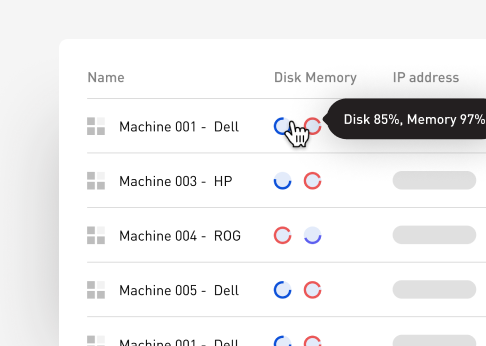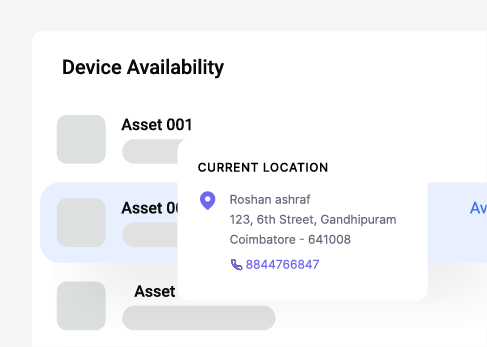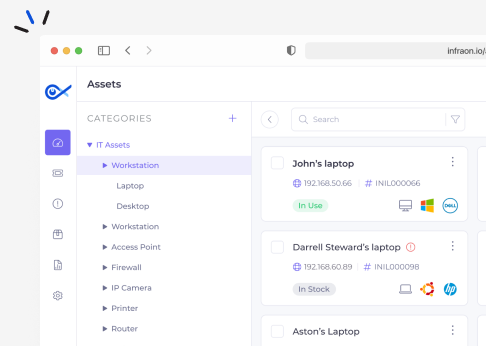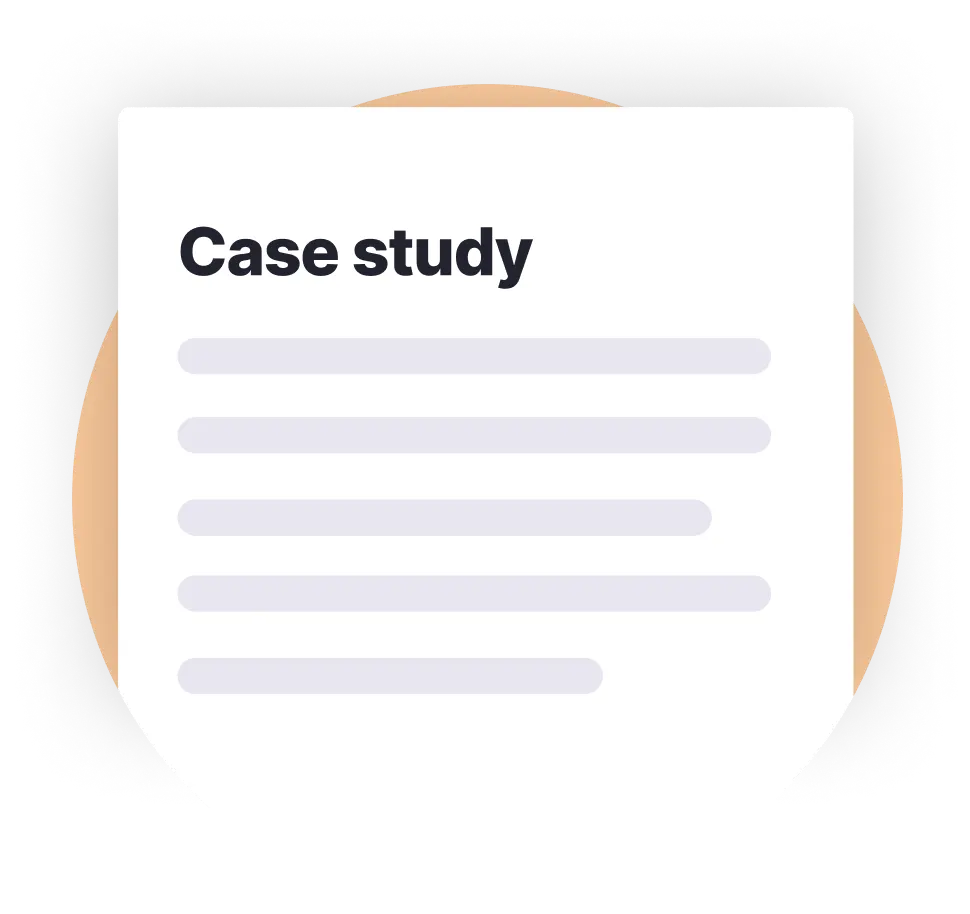Hardware Asset Management
Manage end-to-end lifecycles with Infraon’s
hardware asset management solutions

Manage end-to-end lifecycles with Infraon’s
hardware asset management solutions

Hardware Asset Management (HAM) is a clearly defined process for managing all IT hardware assets throughout their lifecycle. It includes onboarding, cataloging, tracking, and disposing of hardware assets such as computers, printers, servers, and routers.
The ultimate goal of IT hardware asset management is to ensure that these assets are secure, properly maintained, and optimally utilized. It should also be aligned with business needs and industry standards.


Infraon's hardware asset management solution empowers organizations to seamlessly manage all IT hardware assets. It offers an end-to-end view of all hardware assets with advanced features to manage the lifecycle, from acquisition to disposal.
With Infraon's IT hardware asset management solution, you can easily track asset locations, monitor usage and depreciation, and automate several critical workflows. Asset lifecycle management, asset reporting, and asset security are a few of its features.
You can enhance daily operations, reduce costs, and prolong the lifespan of your hardware asset investments.
Enhance financial planning by precisely calculating depreciation –
enabling informed
decisions on IT hardware asset management.
Get scalable and customizable IT hardware asset management solutions that adapt to unique goals. Manage everything from one place, from asset onboarding to disposal.
Accurately monitor IT hardware assets with real-time visibility into their locations and statuses. Ensure hardware assets are always accounted for and utilized.
Maximize the performance and health of IT hardware assets with deep-dive utilization insights. Identify underutilized or overburdened assets and make data-driven decisions.
Secure IT hardware assets with advanced monitoring, access controls, and real-time alerts. Safeguard critical assets against theft, unauthorized use, and compliance risks.
Streamline IT hardware asset license tracking with a centralized system. Be confident that all assets are operating within legal frameworks and prevent costly penalties.
Get detailed reports and analytics on IT hardware assets in a single dashboard. Easily identify trends, optimize asset allocation, and plan for future needs with a clear view.

Low Stock Alerts
Automated Asset Discovery
Barcode Integration
User and Role Management
Audit Trails
Mobile Accessibility
Integration with ITSM features
Explore the impact of technological progress on IT asset management
and help future-proof your organization.

Acquisition is the process of obtaining assets through purchase or leasing. Infraon’s IT hardware asset management solution helps:


Inventory management is critical to the complete asset lifecycle. Infraon’s IT hardware asset management solution makes it easy to manage:
Deployment can be a make-or-break moment for IT asset management. That’s why Infraon’s solution helps:


Maintaining assets is a key part of optimizing overall performance. With Infraon’s IT hardware asset management solution, you can:
Retirement encompasses the decommissioning and disposal of assets. Infraon’s IT hardware asset management solution helps:



Infraon's hardware asset management solution is based on best practices like:
Centralized hardware asset lifecycle management
Regular hardware asset audits and inventory checks
Standardized hardware asset acquisition and disposal workflows
Hardware asset insights - upgrades, replacements, etc.
Powerful security protocols –access controls, encryption, etc.
Automated maintenance and support
By using Infraon's hardware asset management solution, you can reap benefits such as:
Full visibility into hardware assets - location, status, utilization, etc.
Automated asset management workflows - reduced manual effort and errors
Cost savings throughout the hardware asset lifecycle
Extended lifespan of all hardware assets
Valuable insights into hardware asset performance, depreciation, etc.

Hardware Asset Management (HAM) manages physical components (desktops, laptops, IP phones, printers, etc.) and computer networks from the procurement to the retirement stage of assets. A robust HAM solution will give complete visibility to the administrators to check on all the hardware assets, their allocation, condition, etc. It allows the organization to save money by standardizing IT assets.
Hardware asset management (HAM) is a process that helps the IT administrators in an organization to create accountability and transparency with the IT hardware assigned to projects and employees. The key features of HAM are- asset lifecycle management, asset stock and inventory module, integrated ticketing, vendor management, access control barcode, and QR scanning, history tracking, and location tracking. The asset is tagged to the employee from the onboarding until the employee’s separation. If the employee fails to return the assets, it is deducted from their full and final settlement amount.
The HAM software helps the organization save costs and manage the lifespan of the assets seamlessly. It also increases productivity by ensuring that one employee should not hold multiple assets. It saves time in procuring and maintaining hardware assets and improves business agility. It also increases the IT administrator’s control over IT inventories. Minimizes asset theft and increases prompt tracking if a hardware asset is missing from the network.
Centralized information about all assets can be found on one portal through a robust HAM solution which can help the IT administrators to manage them well and propose solutions for reducing costs. Assume that extra assets are underutilized in one business unit and another requires assets. Instead of entering into a new lease to acquire new assets, the two business units can collaborate to find a solution. The assets can be moved through the inter-departmental asset movement mechanism.
HAM increases business agility by tracking the hardware assets of an organization. It helps report the assets comprehensively leased by an organization to the leaders and the CTO. The business units will see the costs incurred due to the number of assets allocated to their unit and the payment made to the vendor for the lease contract. This helps each unit maintain its profit and loss balance sheet and check its profitability.